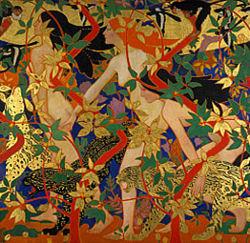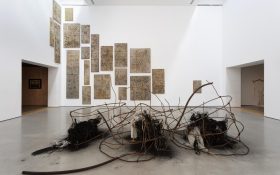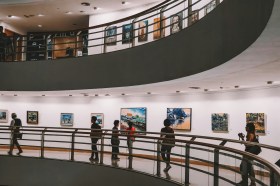The National Gallery complex on Edinburgh’s Mound is the capital’s top free visitor attraction. Walk through Playfair’s stripped classical, red sandstone portico, bear left and there, occupying an entire wall in a gallery of monster canvases each doing the same, you will come face to face with £50 million worth of Titian. Saved for the nation, by the nation, Diana and her nymphs surprised by Actaeon was painted in about 1556, quite probably at the same time as the Archbishop of Canterbury was being burned at the stake for treason.
Of the two big Titians in the collection, Diana and Callisto, which hangs obliquely opposite the other, seems to me to be the better technically. In the £50 million painting, I am drawn to one element after another which don’t look right. The yappy dog at the bottom right is so poorly drawn as to be naive, Diana’s extended right leg is extended way beyond physical possibility and her head is too small for her body. “It doesn’t matter,” said my companion “It’s more about composition than technical proficiency.” Well, no. Just look at the reflections below Diana’s legs. While her left foot is correctly mirrored, the cloth held by one of her nymphs is wrong. It’s basic stuff and it annoys me.
Head downstairs to the home of the Scottish Collection and there on one of the end walls is, surprise, surprise, Diana and her Nymphs. This version, by Robert Burns, was painted in 1926 for the Crawford Tea Rooms in Princes Street. Like Mackintosh with his Willow Tea Rooms in Glasgow, Burns was responsible for everything from the murals to the cake stands and my, what a place it must have been! The painting is a dazzling confection of bold colours and gilding, a design of perfect proportion, balance and technical skill. I love it, but then I have always been drawn to Deco.
Currently showing in the dismally dark enclosure of the lower floor is 25 Years of Photography. This is a celebration of the anniversary of the setting up of the National Photography Collection, and while I can appreciate the rationale for low light when the Turner watercolours are shown here every February, it’s a pity that photographs have to be viewed in what is essentially a dark room. It is anyway a very small exhibition of 27 images, the highlight for me being Peter Cattrell’s Fallen Trees, Moorfoot Hills of 1987, which blurs the line between photography and painting.
Back upstairs there are some spectacular Impressionists. Courbet’s The Wave is a bold composition for its time, almost abstract in quality. Cezanne’s The Big Trees is a loosely geometric, dynamic and well balanced painting which must be one of the most satisfying of any in the collection. Remember, everything is free. Take your time to soak it all up because there’s something there for every taste and if you’re lucky you might even discover something new about yourself. Personally, I don’t see what’s so special about the newest addition to the collection, which, in art terms is possibly tantamount to treason, but I still have a very long journey to take in art appreciation.





